This is an overview of our trip with one or two images (and text) from each day. I hope it inspires readers to check out the details of each day.
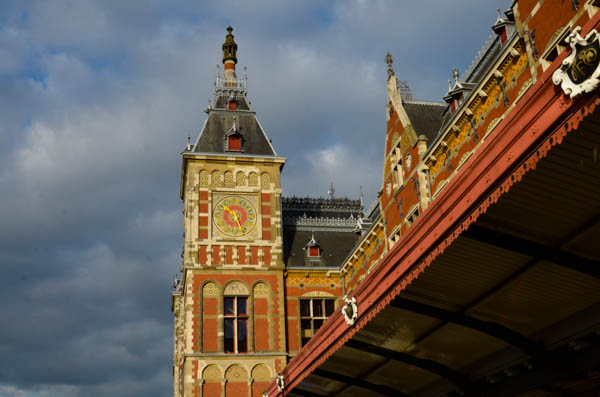
Neither of us had been to Amsterdam before and we were determined to take advantage of the hours between our arrival and the "official" start of the program in the afternoon. The cruise port is within walking distance of the historic city center, so once we checked in to our cabin we headed out.
The Centraal Amsterdam railway station is adjacent to the cruise terminal and was a good introduction to the 19th century architecture of the city. Getting there was also a good introduction to the dominance of bicycles as primary means of transportation in the city center! Bicycle lanes are NOT an afterthought in this city and woe betide the pedestrian or automobile that intrudes on their space!
Our goal for the afternoon was the Begijnhof near the Dam Square. This largely reconstructed remnant of the late Middle Ages is a peaceful sanctuary in a vibrant tourist zone. After our visit we caught the trolley back to Centraal and returned to the ship to unpack and meet our fellow travelers.
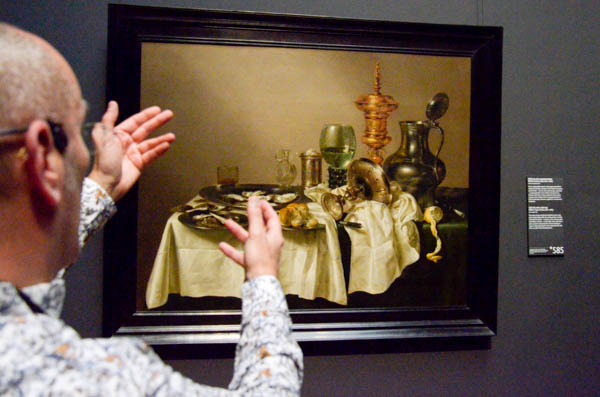
The morning of our second day we embarked on a canal cruise that terminated at the renowned Rijksmuseum. The canals introduced us to the importance of water management in this land below sea level and the unique urban design and building techniques that developed as a result.
At the museum we divided into small groups of ten for guided tours of the "Golden Age" exhibits of Dutch art. Our guide, Paul, was knowledgeable and enthusiastic about his subject. His presentation has changed the way that I look at paintings in a museum. He not only focused on the composition, but also on the use of various forms of perspective (there is more than one?!?) and the ways that artists use paint texture and color to produce desired effects.
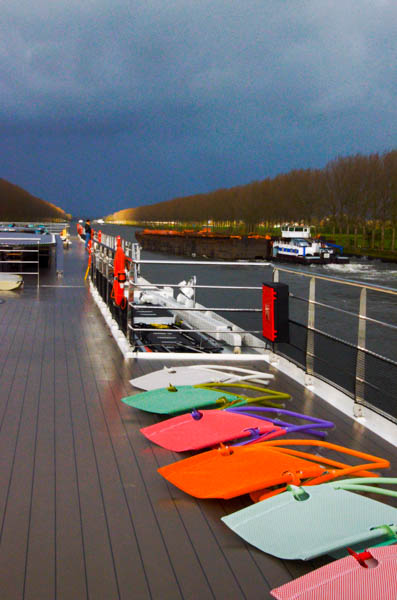
During the introduction on the first day our group leader, Balázs (pronounced more-or-less like ba-LAHJ) Füzesi warned us that we would be hungry to stay and explore the places we visited, but that this program was a mere sample of what each stop had to offer.
This was certainly true of Amsterdam, which has been added to our "next time" list, but we had a boat to catch, so we couldn't linger.
The ship departed on the Amsterdam-Rijn-Kanaal or Amsterdam to Rhine Canal. We raced the threatening rain with success for most of the afternoon. As compensation for eventual sprinkles we were treated to a partial double-rainbow.
The Dutch countryside was more beautiful than I thought a flat-as-a-pancake landscape could be. Even this below-sea-level waterway was higher than the adjacent land. The canal was crowded with freighters and barge tows.
At the end of the canal we passed two locks to raise us to the level of the Rhein River, which we followed for the next couple of days.
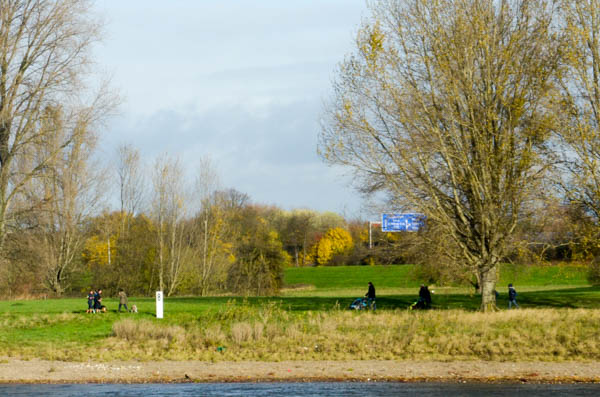
The next morning we enjoyed watching people out for their Sunday excursions along the river.
The pair of runners on the left of the picture kept up with us for a long time. Although our ship was going full speed ahead and passing heavily loaded freighters, we were fighting a stiff current.
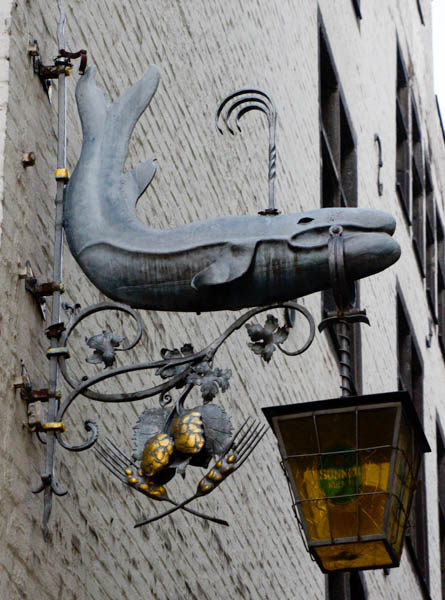
For the iconic and historic sights of Cologne, visit the detailed pages. This was my favorite picture: the sign of the Sünner Brewery. Hops and barley make up the base of the sign. The tavern is called Walfische (Whale), so "Sign of the Whale" makes perfect sense.
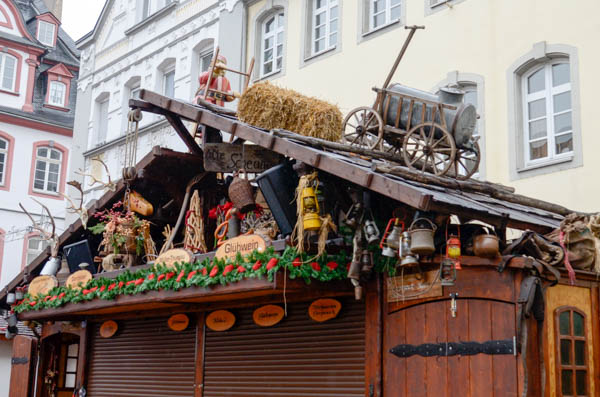
Yes, our next stop, Koblenz, had cathedrals and such like, but I liked this Christmas market kiosk. All the places we had visited to date had Christmas markets preparing to open on the first of December. Shoppers among us were frustrated that none were yet open, but they had their chances later in the trip.
This kiosk was appealing with its collection of Santa climbing down (up?) a ladder on the roof, disembodied reindeer antlers (eew, poor Dancer, et al.), and intimations of glühwein, hot cocoa, and eggnog. I am mystified by the tanker wagon on the roof, unless that's how they get glühwein in bulk.
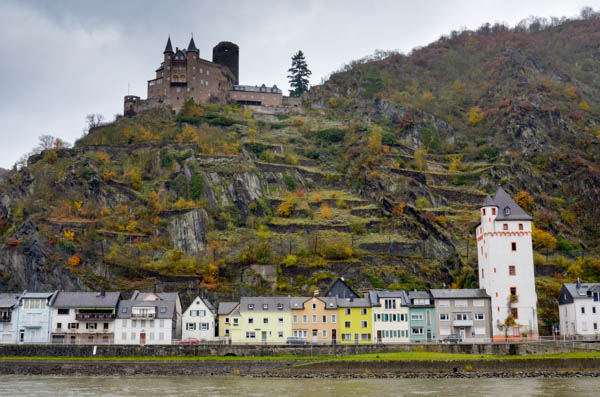
Koblenz was our last stop on the Rhein but we spent the afternoon cruising through the picturesque Rhein Gorge. I took a similar cruise in my school days, and every conceivable inch was cultivated and planted with grape vines. Fifty years later many of the terraces were fallow. This bank of the river was relatively unproductive so it had fallen into disuse.
As a young student I sat with a friend on the upper deck of the tour ship (in the summer sun) and sipped wonderful dry Mosel wine. It was cold and rainy on this day so I sat in the enclosed "Palm Court," sipped a wonderful dry Mosel wine and toasted the past.
During the night we turned up the Main (pronounced like "mine") River for the next part of our journey.
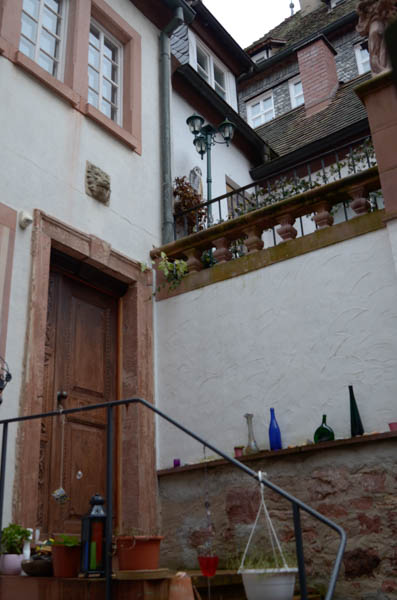
The area of Miltenberg was first settled in the bronze age and later occupied by the Romans. It was the border between Rome and the Germanic tribes on the far side of the Main. When the Romans withdrew in the 3rd century it was occupied by various peoples until the arrival of the Franks in the 6th century. Much of the current village dates back to the 16th century.
Although we are in the state of Bavaria, our guides emphasized that this area is known as Franconia, after the Franks. The Franks don't think much of the Bavarians.
The entire village is picturesque but I liked these houses stacked along the precipitous street leading to the castle above the town.

After the morning in Miltenberg we added an unscheduled visit to the abbey in Amorbach. We were supposed to have free time somewhere else, but the weather was cold and drizzly, so the leaders switched to this indoor excursion.
As we arrived before our time, we were treated to cakes and coffee in a nearby cafe. That was a very popular stop!
Napoleon confiscated the abbey from the Benedictines and transferred it to the Protestant Princes of Leiningen. The church is now Protestant.
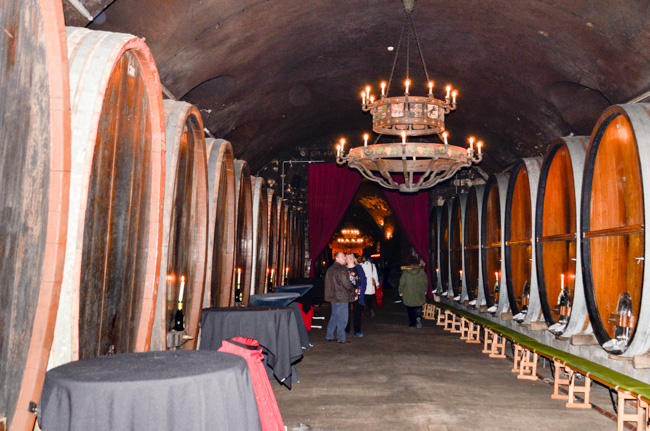
Our visit to Würzburg included a sumptuous Prince-Bishop's palace, but the best part was the wine tasting that followed. We descended into the cellar with its huge tuns. As we progressed to the tasting room, we passed smaller barrels that had been laid down by individuals.
Much of our time in Germany had been in the state of Bavaria, one of sixteen that make up the Federal Republic. Bavaria itself, however, comprises two different linguistic groups: the Bavarians and the Franconians. They do not see eye to eye. There will be more of this in the detailed pages. For now, however, it is enough to know that Franconia is the home of some killer white wines.
At this tasting we sampled Müller-Thurgau, Silvaner and another one that we don't remember and didn't care for (it was sweet).
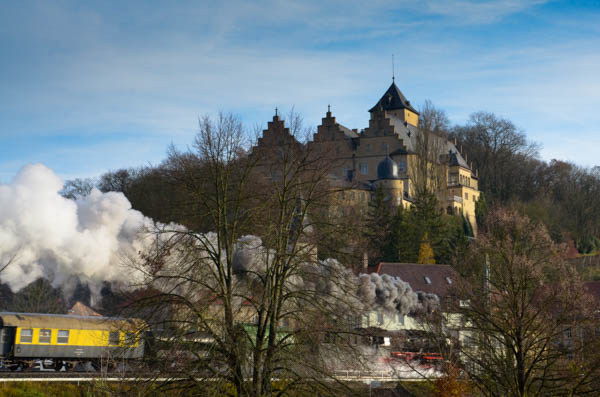
The following day we visited (the over-the-top) Schloss Weissenstein of yet another Prince-Bishop, but the treat of the day was this steam train puffing along the river.
I was waiting to get an image of the picturesque schloss when the pufferbelly came screaming along. It was a reflexive "click" of the shutter.
One of our fellow-travelers complained shortly thereafter that the thick smoke from the train spoiled the view. In my mind, the train WAS the view!
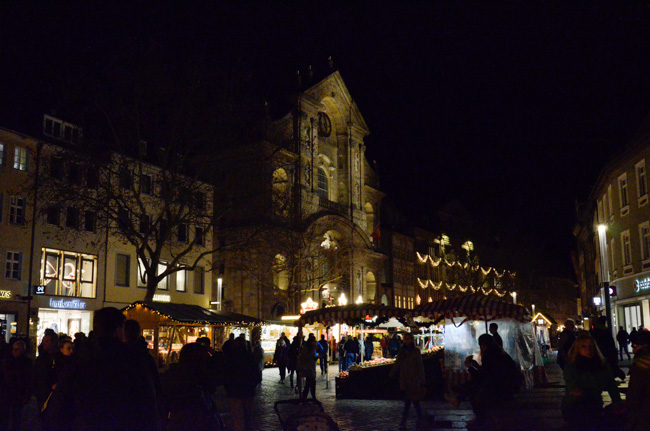
Bamberg is a medieval city. It was the home of the Messerschmitt family, but to the joy of the locals and the preservation of the town, the Messerschmitt aircraft factory was located elsewhere. Since there was no industry of note, the town escaped most Allied bombing. The major war damage was done by the retreating Nazis who dynamited the bridges across the Regnitz river.
The Christmas market in Bamberg was in full swing to the delight of our shoppers.
At Bamberg we left the Main River and entered the Rhein-Main-Danube canal.
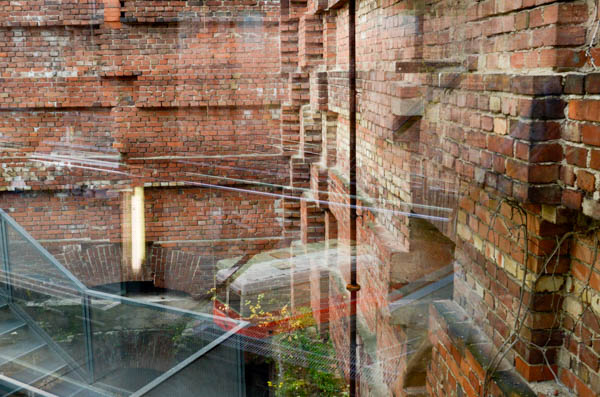
Our Nürmburg focus was on its Nazi past. The Documentation Center, a museum dedicated to the rise and fall of the National Socialists, is located in the uncompleted Nazi Congress Hall. The permanent exhibit has the theme "Fascination and Terror." It was depressing, especially in light of current events in the US. Who could have thought that we would see Nazi sympathizers marching in Charlottesville, VA! As I was leaving the museum, this view of the unfinished brick wall with reflections from the glass walls of the walkway perfectly captured the disorientation that I felt.
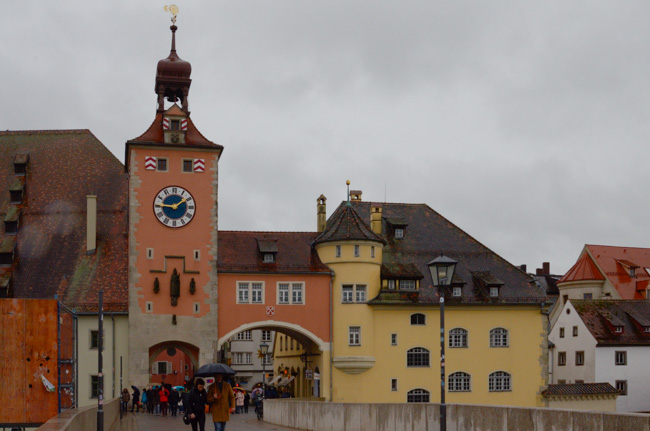
By the time we reached Regensburg we were on the Danube itself. Now we are heading downstream and have fewer locks.
My memory of this city is of cold rain throughout our time there. Nevertheless it is a beautiful and colorful city and would be worth another visit.
Our favorite event was lunch at The Historic Sausage Kitchen. The primary location is an open-air cafe alongside the river, but there is also an indoor restaurant with the same food and a much warmer and dryer atmosphere.
The place has been open for almost 900 years (!) and the food is wonderful. It is adjacent to this bridge.
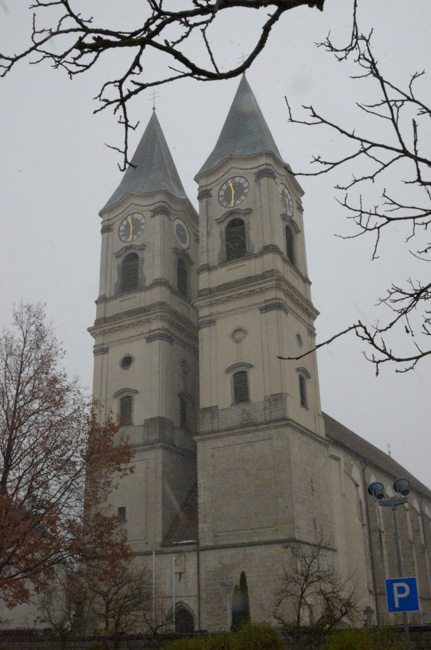
Although our next stop was listed as Deggendorf, we spent precious little time there. Instead we visited a couple of "Baroque-i-cised" abbeys. This one is the Niederaltaich Abbey. It looks hazy because it was snowing heavily. We had snow showers throughout the day.
Starting today we were "really" in Bavaria. Our local guide here was as dismissive of the Franconians as the Franconians were of the Bavarians.
The abbey dates from the 8th century. Like most places it suffered from fires, war and floods. Although it survived many disasters, it didn't survive Napoleon. He secularized the abbey in 1803 and it fell into disrepair. Since its revival in 1927, it has become a focal point of ecumenical outreach -- especially to the Eastern Orthodox church.
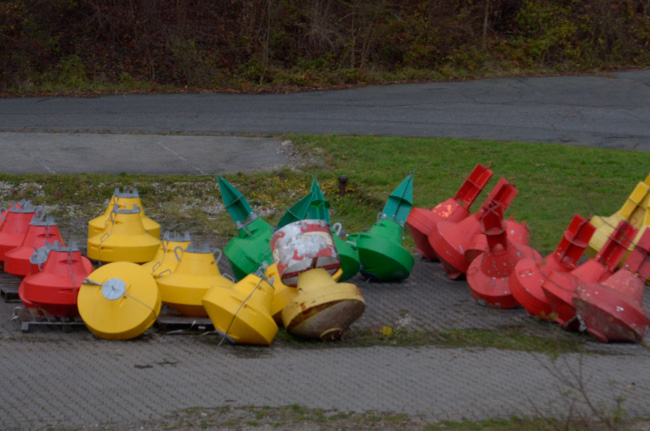
The high point of the afternoon was passing the last lock before Passau. This massive structure held our ship and two freighters side by side. I have more pictures, but my favorite was this one of the colorful channel markers.
I know about red & green, but yellow? Google tells me that they are "special" markers that are used for a variety of things, but not to mark hazards.
We spent the night docked in Passau.
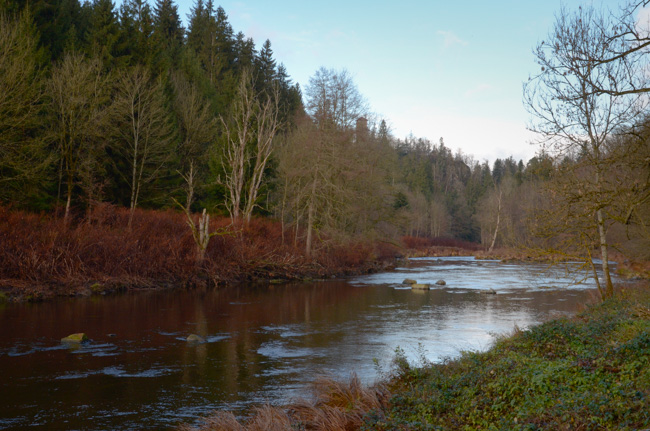
The Road Scholar program at Passau was a city tour in the morning, but I couldn't face yet another charming Baroque town. Five other Road Scholars had the same idea and we signed up for a nature walk offered as one of the ship's other excursions.
Three rivers come together at Passau: the Danube, the Inn and the Ilz. The nature walk followed the Ilz for three or four miles. We all enjoyed the fresh weather, which ran the gamut from snow to rain to sunshine, the exercise, and the opportunity to learn about the region's flora and fauna.
As we left Passau, we said goodbye to Germany and entered Austria.
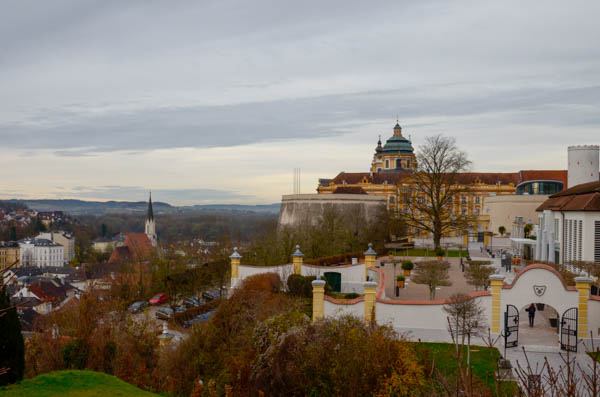
The next morning found us at Melk Abbey. Although sumptuous Baroque architecture is not my cup of tea, the Abbey Museum (opens in new tab) was a favorite stop. The design and presentation of the exhibits blew me away. The latest iteration of the web site is an improvement over past versions. Click on the sidebar links to explore.
Like many other places we visited, the posted information was primarily in German. I was surprised at how much I remembered.
At present most of the Abbey complex is dedicated to a secondary school. It was a pioneer in offering co-ed Catholic education.
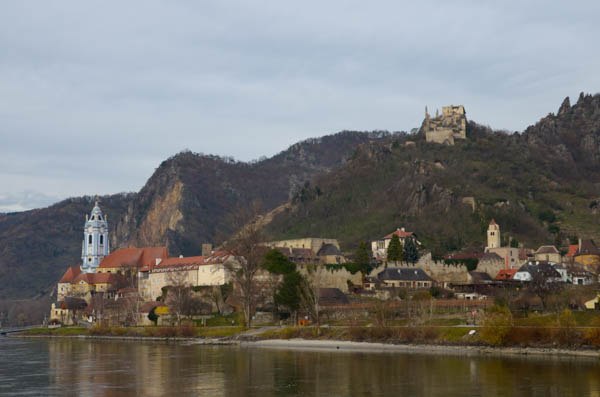
After our visit to the abbey we cruised down the Wachau Valley. The slopes of the valley were filled with vineyards and orchards.
The village of Dürnstein with its distinctive blue church tower overlooked by the ruins of the old fortress is at the end of the valley. The fortress had once imprisoned Richard I of England who had offended the Duke of Austria. The huge ransom demanded for his release funded many improvements to medieval Austria.
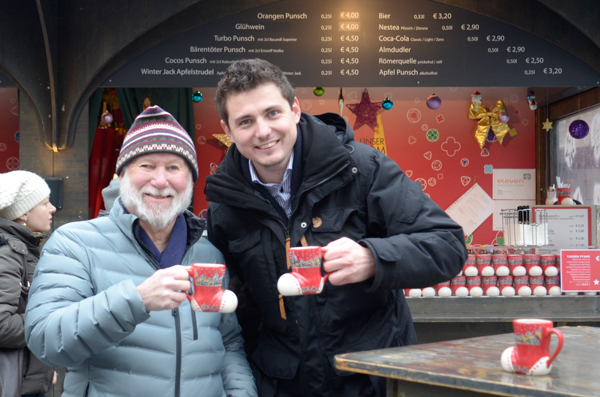
The next morning we arrived in Vienna, where we would spend two days.
Neither Jim nor I cared for Vienna. The first day was a blur as we drove around town in a bus and heard much more than we could absorb. The best part of the day was having a glühwein with our Road Scholar guide Balázs.
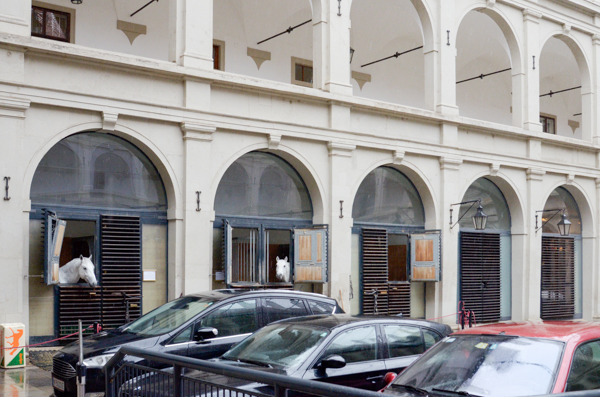
The second day, however, was the capstone of my trip: a visit to the Spanish Riding School!
Performances are only scheduled on the weekends, but I signed up for the "morning exercises" and an afternoon tour of the facility and stables. Pictures aren't allowed during the exercises, but I was able to capture this one afterwards. The stables are right in the urban center.
Fear not, the horses only work one-half the year and get regular R&R in the country.
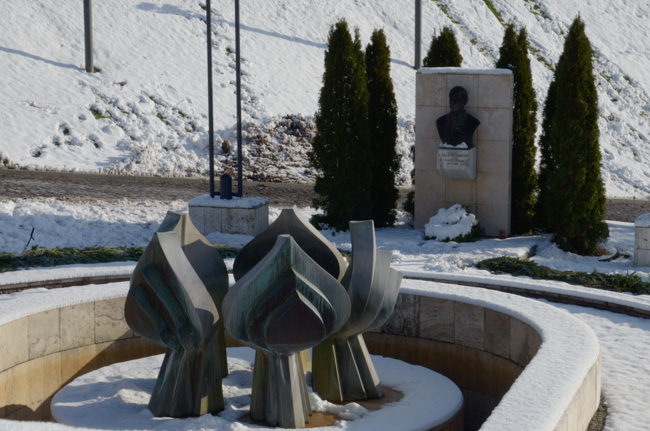
We had a whirlwind tour of Bratislava, Slovakia, the next morning. Our local guides were nostalgic for the old Communist regime. The level of mistrust in the current government is high and the old certainties have been lost.
That said, my favorite site of the day was this memorial to Alexander Dubček. As our guides said, he may have been a Communist, but he was a good Communist. I was studying in Germany in 1968, and I well remember the Prague Spring. A Czech couple was studying in the school and that made it very personal. They returned home early because they were worried about their family.
Bratislava was a focal point of the Soviet invasion because it shares a border with Hungary.
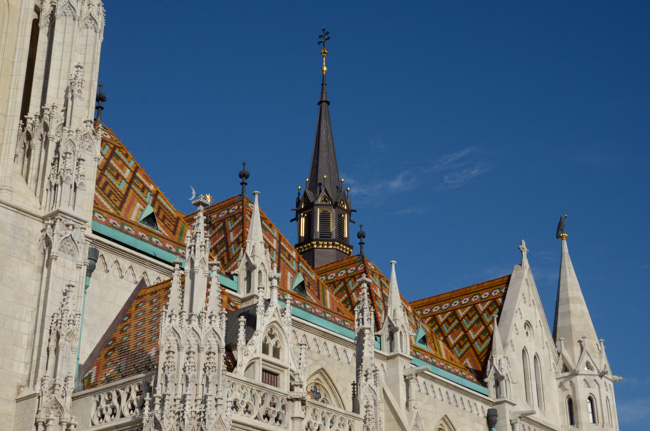
Our trip saved the best for last! Of all the places we visited only Budapest and Amsterdam made it onto our "next time" list, and Budapest was our clear favorite. We did not scratch the surface of this beautiful city.
After a surfeit of Baroque churches, the Matthias church of Buda's Castle District, was a welcome change. Although the exterior is Gothic, it was atypical on the inside.
I hope you are now tempted to join us in the details of our journey.
Click your "back" button to return to the previous page or click for our picture album.